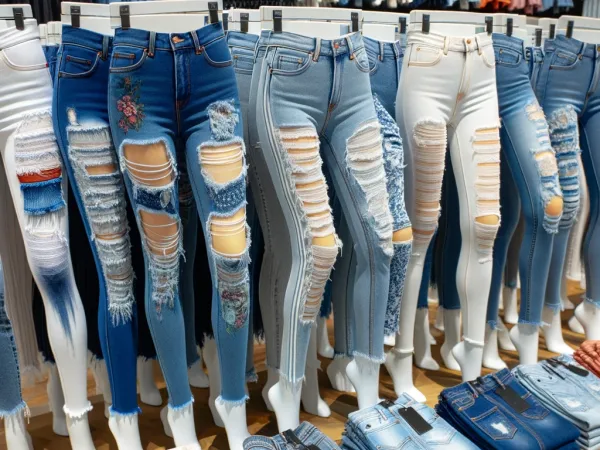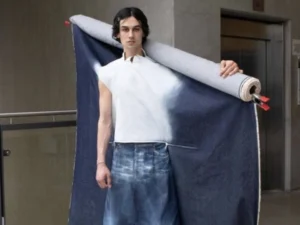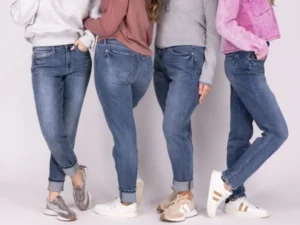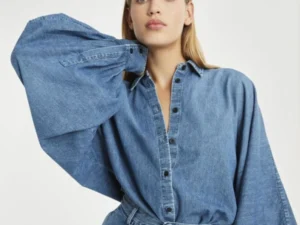What are Warp and Weft Yarns?
The creation of fabric, a material integral to countless aspects of our daily lives, from the clothes we wear to the linens in our homes, begins with the fundamental understanding of warp and weft yarns. These two types of yarns are the backbone of woven fabrics, interlacing at right angles to form textiles of various weights, strengths, textures, and patterns. This article aims to demystify warp and weft yarns for beginners, providing a clear, professional overview suitable for those just stepping into the world of textiles.
The Basics of Weaving
Weaving is one of the oldest and most versatile methods of producing fabrics. At its core, weaving involves interlocking two sets of yarns at right angles to each other. The loom, a device designed to hold the warp yarns in tension, allows the interlacing of the weft yarns, creating a cohesive fabric. This interplay between warp and weft yarns can produce simple fabrics like plain weaves to complex patterns like jacquards, each with unique characteristics and uses.
Warp Yarns: The Foundation of Fabric
Warp yarns run lengthwise in a piece of fabric and are installed on the loom before the weaving process begins. They form the skeleton of the fabric, providing structural stability. Warp yarns need to have high strength and elasticity to withstand the tension of the loom and the friction of the weaving process. Common materials for warp yarns include cotton, polyester, and silk, each offering different qualities to the fabric. For instance, cotton warp yarns are prized for their softness and breathability, making them ideal for clothing and bedding, while polyester yarns offer superior strength and durability, suited for more demanding applications like upholstery.
Weft Yarns: Weaving Diversity into Fabrics
Contrary to warp yarns, weft yarns run horizontally and are woven through the warp yarns. They provide the opportunity to introduce texture, color, and pattern into the fabric. Weft yarns can be made from the same or different materials as the warp yarns, allowing for a vast range of fabric characteristics. For example, weaving a delicate silk weft yarn through sturdy cotton warp yarns can create a fabric that combines the durability of cotton with the luxurious feel and sheen of silk.
The Interplay Between Warp and Weft Yarns
The choice of warp and weft yarns plays a crucial role in determining the final fabric’s properties. For instance, a tightly woven fabric made from high-strength polyester yarns in both warp and weft can produce durable materials suitable for outdoor use, where resistance to wear and weather is paramount. In contrast, a fabric woven with a blend of cotton warp and bamboo viscose weft yarns might offer a soft, absorbent material perfect for towels and bathrobes.
One practical example of this interplay can be seen in denim, the fabric of choice for jeans. Traditionally, denim is woven using cotton yarns, with the warp yarns dyed in indigo while the weft yarns remain white. This results in denim’s characteristic blue exterior and white interior. The specific arrangement of warp and weft yarns, along with the twill weave, gives denim its durability and distinctive appearance.
Practical Applications and Examples
Warp and weft yarns find their application in a wide array of products beyond clothing. In home textiles, the combination of different warp and weft yarns can produce fabrics with specific qualities, such as blackout curtains that use densely woven fabrics to block light. In the technical textiles industry, the strategic selection of warp and weft yarns can result in materials with specialized functions, such as fire-resistant fabrics for firefighters’ uniforms, made from aramid fibers known for their ability to withstand extreme heat.
Choosing the Right Warp and Weft Yarns for Your Project
For beginners looking to embark on a weaving project, the selection of appropriate warp and weft yarns is a crucial first step. Consider the end use of the fabric. Is it for a garment that requires softness and drape, or for home furnishings that need durability and strength? Understanding the characteristics of different yarn materials and how they interact when woven together will guide you in making the right choice for your project. When in doubt, consulting with yarn manufacturers or textile experts can provide valuable insights and recommendations.

Conclusion
Warp and weft yarns are the essential components of woven fabrics, each playing a distinct role in the fabric’s structure, appearance, and performance. By understanding these fundamental elements, beginners can start to explore the vast world of textiles, experimenting with different yarn combinations to create fabrics that meet specific needs and express personal creativity. As we have seen, the possibilities are endless, limited only by the weaver’s imagination and the characteristics of the yarns themselves.
- Further Reading and Resources
For those interested in deepening their knowledge of weaving and fabric design, numerous resources are available. Books such as “The Weaver’s Companion” offer comprehensive guides to weaving techniques and materials, while websites and online forums provide a platform for sharing experiences and advice with fellow textile enthusiasts.






